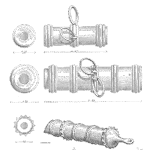
Ramesh Gulati and George Williams discuss Block Diagrams
[Read more…]Your Reliability Engineering Professional Development Site
by Ramesh Gulati Leave a Comment
by Sanjeev Saraf Leave a Comment

A listing of online tools and resources that may interest safety or reliability professionals. Always check how well the tools work before using for serious decisions.
[Read more…]
Effective communication is the one thing that makes your life better, more fulfilling, and more rewarding. That is equally true in life and your career. Give the soft skills and communication, in particular, the same emphasis that you give your hard skills. Soft skills are the difference makers.
I agree with technical professionals who counter with this observation. We then agree that one of the first things they teach you in any church is how to pray.
Again, I agree with technical professionals who cite this one. Then we agree that every family has a fair number of poor relationships that could be improved if we all communicated more effectively.
[Read more…]by André-Michel Ferrari Leave a Comment

A proper Computer Maintenance Management System (CMMS) setup can make a world of difference in an organization’s asset management journey. Conversely, a substandard setup can be a living hell for Reliability Engineers like myself and other analysts. This article highlights some practices to avoid in order to gain the most out of your CMMS in the long run. The examples given are based on my own experience in industry. There could be many more learnings out there. Reader comments and suggestions are most welcome as this will benefit the entire Maintenance and Reliability community.
[Read more…]by Christopher Jackson Leave a Comment

We like to think we make decisions based on information. We don’t. We make decisions based on emotions. And the most important emotion we rely upon for decision-making is confidence. We can be provided all the information in the world, but if we can’t understand it, trust it or believe it, we look for confidence in other ways. Often to disastrous outcomes.
The number of ‘well-funded’ production efforts full of ‘very smart people’ that routinely generate expensive but unreliable products is sadly, very high. And it all comes down to the wrong types of confidence that well-paid decision-makers chase.
by Mike Sondalini Leave a Comment

Estimating the money for commissioning spares allowance of a capital project using the maintenance cost in the RAV ratio is probably wrong, but it is often done. The allowance also depends on the life cycle asset management processes and practices in use.
by Greg Hutchins Leave a Comment

The term “deadline” hasn’t been around that long, about 160 years in fact. The first written mentions were in 1863 during the American Civil War. The “dead-line”, as then, was defined as “a line drawn within or around a prison that a prisoner passes at the risk of being shot” and shot dead at that. Prison conditions could be so deplorable that some men crossed the line on purpose, some survivors wrote that they had wished they’d crossed it to end their misery. Deadlines in those days were lessons in ultimate liability.
[Read more…]by Nancy Regan Leave a Comment

Unless you live in Fantasyland, there’s no silver bullet for achieving your equipment Reliability goals. Start at the beginning, with Reliability Centered Maintenance and watch your Reliability program come to life.
[Read more…]by Hemant Urdhwareshe Leave a Comment

Dear Quality and Reliability Professionals, this video is created to understand and learn how to use Casio fx991-MS calculator for performing correlation and regression with a simple application example that viewers can try. The video will be useful for all those who want to prepare for exams by American Society for Quality (ASQ).
[Read more…]by Miguel Pengel Leave a Comment

You don’t realise how important it is to get your critical spares holding right until your $50K/hr machine is sitting dead with an emergency part all the way in a different city.
So how does your warehouse ensure you have what you need, when you need it? Who decides how much to stock?
Well… in most cases on mining sites there is no real math behind this number, and that’s a shame considering how much not having spares costs us in lost opportunity.
by Debasmita Mukherjee Leave a Comment

In the current century, data is ubiquitous but how to make use of it to drive product decisions can take time and effort. Data visualization is a useful technique to identify patterns in a dataset and derive exploratory statistics to analyze trends.
[Read more…]by Sanjeev Saraf Leave a Comment

One way to think about risks is in terms of uncertainty.
Donald Rumsfeld, United States Secretary of Defense, explains the limitations of intelligence reports and issues surrounding risk-based decisions.
[Read more…]As we know, there are known knowns; there are things we know we know. We also know there are known unknowns; that is to say we know there are some things we do not know. But there are also unknown unknowns – the ones we don’t know we don’t know.Donald Rumsfeld
by Karl Burnett Leave a Comment

The Royal Navy built its first steam-powered ship, the HMS Comet, in 1822. The first generation of steamships normally had both sails and a steam engine. A ship with both sails and a boiler had a long range and was mobile in close quarters. A boiler reduced the tactical importance of wind direction, and allowed maneuvering in disadvantageous winds or when becalmed. Over the next 40 years, the Royal Navy converted many sailing ships to steam by retrofitting boilers.
The capability came at a cost. A worldwide coal distribution system was required. The ship had to contain a stack, machinery, the boiler itself, and tons of coal. The added weight changed how the ship moved and reduced space for supplies, weapons, and ammunition. Refueling, called coaling, changed operational patterns.
[Read more…]
Philosophies are for philosophers, theories are for academics, and approaches are for practitioners. That’s why when I go into an industrial plant, I ask the maintenance supervisor about their maintenance approaches, not their theories on maintenance. And the same can be said with business leaders. When I talk to executives, I don’t ask about their philosophy on running their business. I ask them to describe their approaches to running their business.
FINESSE is a cause-and-effect approach for effective communication with high levels of complexity and uncertainty. Said another way, FINESSE is an approach used for big, strategic decisions that take months or years to make. FINESSE facilitates the memory of effective communication: Frame, Illustrate, Noise, Empathy, Structure, Synergy, and Ethics.
[Read more…]by Carl S. Carlson Leave a Comment
Invisible threads are the strongest ties Friedrich Nietzsche
Key Teaching Principle # 2 is the instructor maintains a genuine connection with each of the students.
Our scientific knowledge has accelerated so rapidly that we sometimes forget the importance of human connection to our well being.
 Ask a question or send along a comment.
Please login to view and use the contact form.
Ask a question or send along a comment.
Please login to view and use the contact form.